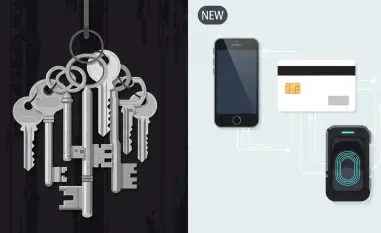In today’s hyper-connected world, protecting sensitive information and maintaining robust cybersecurity measures is more critical than ever. Cybersecurity has rapidly become a top priority for organizations across industries as cyber threats continue to evolve and increase in sophistication. Traditional security models, which often rely on perimeter defenses, are increasingly being outmoded by more advanced threats. As a result, a paradigm shift toward a zero-trust security framework is gaining momentum. The zero-trust model focuses on the principle that no user or device should be trusted by default, irrespective of whether it is inside or outside the network perimeter. This approach ensures that every access request is continuously authenticated and validated, making it a comprehensive solution for enhancing cyber resilience.
Establish Identity and Access Management as the Core
Identity and access management (IAM) serves as the cornerstone of a zero-trust security framework. Central to this concept is the need to continuously authenticate each access request based on contextual information and monitoring user activity patterns. This model is fundamentally about enforcing least privilege, which means that users should only be granted the minimum level of access required to perform their duties.
Multi-factor authentication (MFA) and passwordless authentication are primary methods to verify the identity of users, thus ensuring that only legitimate users are granted access to sensitive information. Applying the least-privilege access further refines this approach, allowing or denying access based on various contextual factors such as identity, network, data, device, and application. By continuously verifying user and device identities based on risk factors, organizations can make access decisions that are informed by a risk score, thereby fortifying their defenses against unauthorized access. This continuous evaluation significantly enhances the security posture by adapting to any changes in the threat landscape.
Having a sound IAM strategy enables organizations to protect against a variety of attacks, including credential theft and internal threats. It also aligns user roles with security policies, ensuring that employees have the access they need without exposing critical systems to unnecessary risks. Through continuous monitoring and contextual verification, IAM ensures that each access request undergoes rigorous scrutiny, thereby reinforcing the overall security framework.
Develop Comprehensive Visibility and Analytics
Developing comprehensive visibility and analytics is essential for understanding the context of each access request. Organizations must analyze events, activities, and behaviors by leveraging artificial intelligence (AI) to monitor and gain insights into their network activities. AI-driven security analytics can detect anomalies and potential threats that might otherwise go unnoticed, thereby providing a robust layer of defense against malicious activities.
Achieving real-time visibility into users, devices, and applications is pivotal for detecting and responding to security incidents swiftly. By using AI to monitor both encrypted and unencrypted network traffic, organizations can uncover unusual patterns that indicate potential security breaches. Implementing robust logging and monitoring practices across cloud, on-premises, and hybrid environments enables a unified view of all activities, ensuring that no access request goes unmonitored.
Monitoring tools equipped with advanced analytics capabilities can automate the identification of security threats, thereby improving the efficiency of the security operations center (SOC). These tools can also help organizations in maintaining compliance with regulatory requirements by providing detailed logs and reports of access activities. With real-time analytics, any deviations from established security policies can be detected and addressed promptly, ensuring that the security framework remains resilient against evolving threats.
Deploy Microsegmentation and Least Privilege
Microsegmentation is a key strategy in a zero-trust security framework that involves isolating critical workloads and applications to limit the impact of a security breach. This technique divides the network into smaller, manageable segments, each with its own set of access controls. The goal is to ensure that even if one segment is compromised, the breach does not spread to other parts of the network.
Implementing microsegmentation can be challenging, particularly in environments with many dependencies between applications, users, and services. Most legacy systems were not designed with microsegmentation in mind, making it difficult to define access policies across multiple environments. Employing automated network discovery tools helps map these dependencies and gradually define segmentation policies, providing a clear roadmap for implementation.
In addition to segmentation, employing least-privilege access is crucial to the zero-trust model. Automated policy tools can streamline rule enforcement, making it easier to ensure that users have access only to the resources necessary for their roles. Network detection and response tools provide real-time visibility, ensuring that any anomalies within a segment can be quickly identified and addressed. Continuous monitoring tools automate compliance checks, maintaining the integrity and security of the segmented network.
Enforce Strong Device and Endpoint Security
Endpoint security forms another critical pillar of the zero-trust framework. With the proliferation of mobile devices and remote work, organizations must implement robust measures to monitor, detect, and remediate malicious activities on endpoints. Ensuring that devices meet security standards before granting access is a fundamental step in maintaining network integrity.
Mandating device posture checks involves assessing whether a device complies with the organization’s security requirements, such as having updated software and antivirus protection. Endpoint detection and response (EDR) and extended detection and response (XDR) solutions provide continuous monitoring and threat detection across endpoints. These solutions collect and analyze data to detect potential threats and initiate appropriate remediation actions.
By continuously monitoring and enforcing compliance on both managed and unmanaged devices, organizations can mitigate risks associated with unauthorized or compromised devices. Endpoint security solutions can detect and respond to threats in real time, providing an additional layer of defense against cyber-attacks. Integrating network-wide visibility and defense orchestration capabilities ensures that security policies are consistently applied across all devices, reinforcing the zero-trust approach.
Leverage Continuous Verification and Adaptive Policies
A dynamic security environment requires continuous verification and adaptive policy control methods. The traditional static, perimeter-based security model is no longer sufficient to address the increasing complexity of modern cyber threats. Instead, adopting a risk-based approach that adjusts security policies based on real-time risks can significantly enhance an organization’s cyber resilience.
Adaptive policies adjust in real-time based on risk signals, ensuring that security measures remain responsive to the current threat landscape. Organizations can leverage AI-enabled automated security responses to take blocking actions and enforce remediations based on defined processes and security policies. This continuous evaluation of trust levels ensures that access decisions are always informed by the latest threat intelligence and behavior analysis.
Transitioning to a dynamic, risk-based model involves integrating robust threat intelligence and behavior analysis into the security framework. Automated threat detection and response mechanisms allow organizations to swiftly identify and mitigate risks, reducing the window of opportunity for cyber-attacks. By continuously evaluating and adapting security policies, organizations can maintain a proactive stance against evolving cyber threats, ensuring that their security measures are always aligned with the current risk environment.
Proactive Steps for Future Security
Identity and access management (IAM) is central to a zero-trust security approach. This mindset demands continuous authentication of every access request by assessing contextual information and monitoring user behavior. The principle of least privilege means users are provided only the minimum access necessary to perform their roles.
Primary methods like multi-factor authentication (MFA) and passwordless authentication verify user identity, ensuring only authorized individuals access sensitive data. Refining this with least-privilege access involves assessing factors such as identity, network, data, device, and application context. Continuous verification of users and devices based on risk factors helps organizations make informed access decisions, enhancing protection against unauthorized access. This ongoing evaluation strengthens security measures by adapting to evolving threats.
Implementing a robust IAM strategy helps defend against attacks, including credential theft and insider threats, aligning user roles with security policies. Through constant monitoring and contextual verification, IAM ensures each access request undergoes stringent scrutiny, bolstering the overarching security framework.













